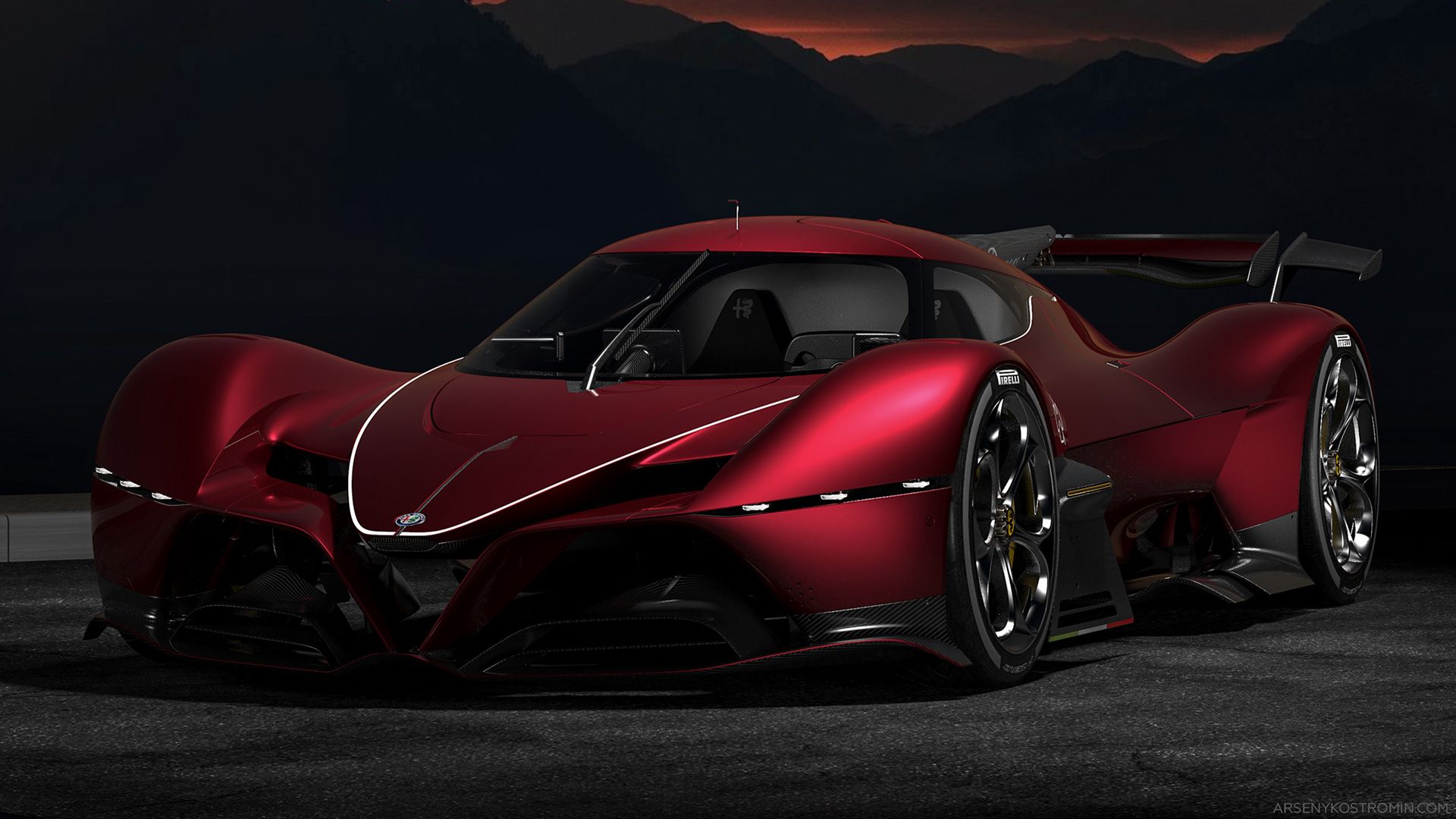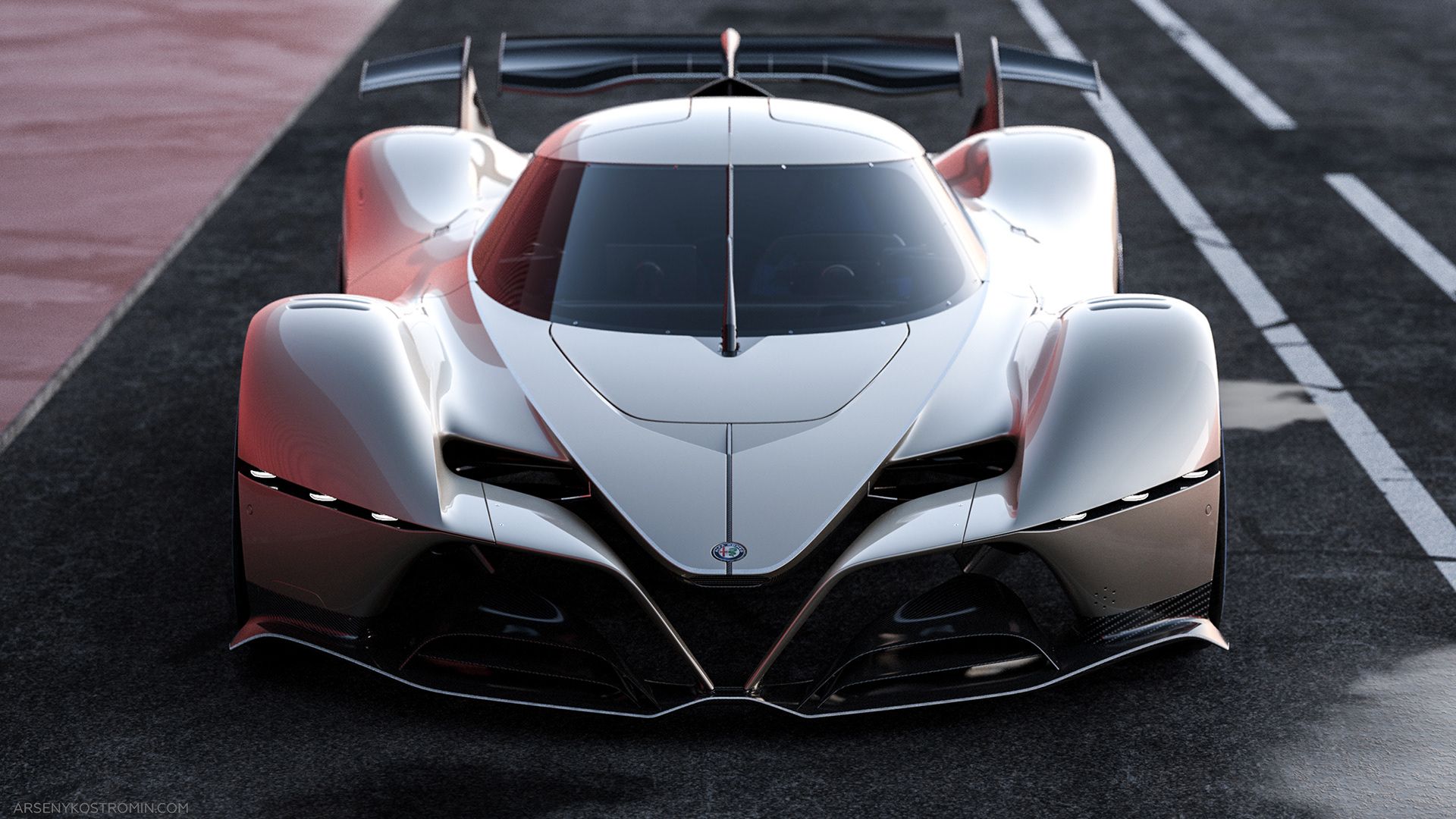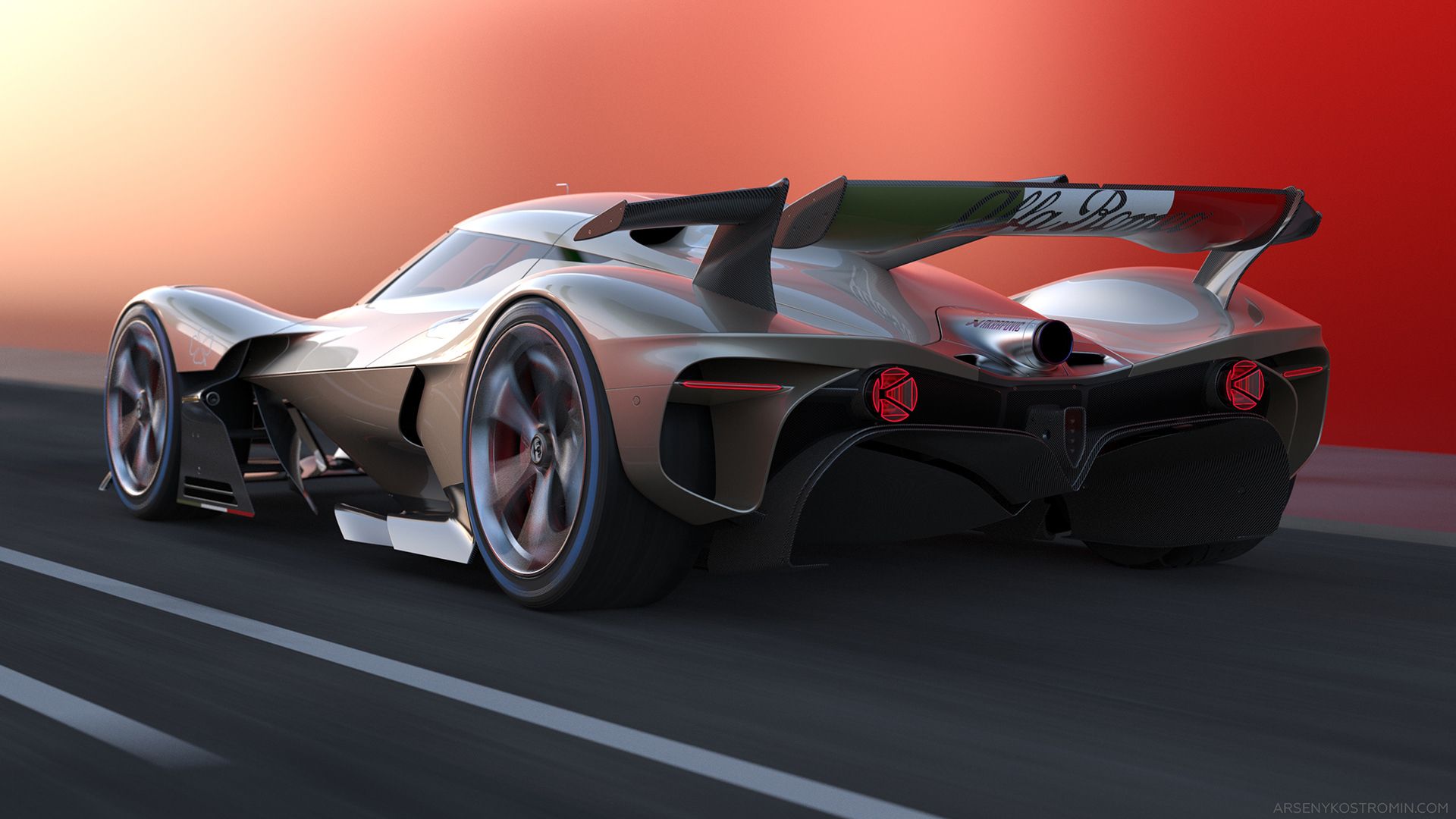The name Alfa Romeo has always been tightly tied to the world of motorsport. The 8C-R Tazio design study fully reflects that bond, as its name itself is a tribute to Italian race driver Tazio Nuvolari, who manhandled grand prix Alfas back when you could hardly find faster vehicles on the planet.
At the same time, the Alfa Romeo 8C-R Tazio is both a nod back to one of the most intricate designs to come out of the brand’s studios - the Disco Volante – and a celebration of the company’s 110th anniversary. And the best thing about it: it was imagined by an independent designer who’s had a long-lasting crush on Alfa Romeo.
Motorsport-centric, just like the better part of Alfa Romeo’s history
When Arseny Kostromin set out to create a performance-oriented street-legal car that would still be able to compete in the FIA WEC Hypercar class, some choices were obvious. It had to be mid-engined, so the artist started from a scenario where a naturally-aspirated V-12 and the sequential gearbox are both structural elements of the carbon fiber monocoque chassis.
As a result, he could then imagine a huge-ass rear diffuser much-needed for the level of downforce it can generate in conjunction with the fragmented rear wing.
Visually, there’s nothing that’s not drool-worthy about the 8C-R Tazio. Our favorite quirk, however, is the exposed Akrapoviç exhaust inspired by Formula 1’s free-standing aero pipes and, of course, the stylish rounded taillights.
That aside, take your time to examine the design study a little closer; you’ll then be able to spot some Disco Volante styling cues in the way the cabin integrates the windshield and further connects with the low, muscular front and rear shoulders.
A Short History of the Alfa Romeo Disco Volante
The Original Alfa Romeo C52 Disco Volante
Disco Volante means ‘flying saucer’ in Italian. The original Disco Volante was Alfa Romeo and Milan-based Carrozzeria Touring’s vision of what a space age-born design would look like on a road-going car. A sports car, albeit experimental and aimed exclusively at collectors and connoisseurs, tested in the wind tunnel and wrapped around an all-new (at that time) tubular space frame chassis covered in aluminum panels, featuring bits and bobs borrowed from the Alfa Romeo 1900. The final drag coefficient (Cd) was an impressive 0.25.
Initially, power came from a 2.0-liter inline-four engine slapped with two carburetors. The unit churned out 156 horsepower sent down through a four-speed manual. Helped by its aero body, the Disco Volante could reach a top speed of 220 kph (140 mph). Later on, two Disco Volantes were built around a 3.5-liter straight-six powerplant good for around 227 horsepower. These could reach a top speed of 240 kph (149 mph).
Each Disco Volante was hand-built over 4,000 hours of manual work. Production only lasted between 1952 and 1953.
Alfa Romeo C52 Disco Volante specifications
|
Engine |
2.0-liter inline-four |
3.5-liter straight-six |
|---|---|---|
|
Horsepower |
156 HP |
227 HP |
|
Transmission |
four-speed manual |
four-speed manual |
|
Top Speed |
220 kph (140 mph) |
240 kph (149 mph) |
The Disco Volante Remake
At the 2012 Geneva Motor Show, Touring Superleggera revealed its own interpretation of the Disco Volante. Based off the Alfa Romeo 8C Competizione, the revived Disco Volante packed a Maserati-sourced 4.7-liter V-8 cranking out 443 horsepower and 480 Newton-meters (354 pound-feet) of torque handled by a sequential paddle-shift transaxle gearbox and a limited-slip diff.
The modern Disco Volante’s body is still made of aluminum, and was further derived into a Spider shown at the 2016 Geneva Motor Show. Just like the coupé, the Spider could go from zero to 60 mph in four, four point something seconds, on its way to a top speed of 290 kph (180 mph).
2013 Alfa Romeo Disco Volante
|
Engine |
4.7-liter V-8 |
|---|---|
|
Horsepower |
443 HP |
|
Torque |
354 LB-FT |
|
0 to 60 mph |
4 seconds |
|
Top Speed |
290 kph (180 mph) |
Image credit: Arseny Kostromin on Bēhance.



